

Making Japanese sweets is gaining popularity among foreigners.
Wagashi is an atmospheric traditional culture that expresses the seasonal changes and atmosphere unique to Japan.
It is gaining popularity among foreigners as a culture that is also beautiful to look at.
In this article, we will explain why making wagashi is popular among foreigners and the history of wagashi, and then introduce facilities and spots where you can experience wagashi.
I will also give you more details on what to expect when you experience it,
I want foreigners to enjoy traditional culture.”
Why is making wagashi so popular?” please read the article to the end.
Let’s learn the charm and fun of making Japanese sweets.
Why is the wagashi experience so popular with foreigners?
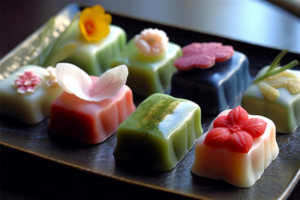
Why is the Japanese confectionery experience so popular among foreigners? The following is a summary of the reasons why making wagashi is popular among foreigners.
You will see the charm of Japanese sweets making, which even Japanese people do not know much about.
Beautiful to look at.
If you have ever seen wagashi, you are familiar with its beauty. The beauty of wagashi is one of the reasons why they are so popular among foreigners.
In particular, “nerikiri”, which can be freely manipulated in terms of color and shape, is one of the most popular of all wagashi. By shaping them with a spatula, making incisions, and creating beautiful shapes such as seasonal flowers, wagashi can be enjoyed not only for their taste but also for their appearance.
Other examples of beautiful-looking Japanese sweets include yokan (bean jelly), dorayaki (baked dumplings with beautifully browned edges), and castella (sponge cake).
Wagashi is a traditional culture popular among foreigners because of its beautiful appearance.
Learn about Japanese food culture
Wagashi also plays an important role in learning about Japanese food culture.
Some beautiful Japanese sweets are wagashi, while others are more familiar to Japanese people. Some examples are dorayaki, dango, and kashiwa mochi.
Learning how to make wagashi and the history of wagashi can also lead to learning about Japanese food culture. For foreigners, sweets that we usually eat in our daily life are interesting and unique to their own country.
Wagashi is one of the most popular traditional Japanese food cultures to learn about.
Can foreigners experience making Japanese sweets?
I understand why making Japanese sweets is so popular, but is it something that foreigners can experience?
Don’t worry, making wagashi is a traditional culture that can be experienced by people of all ages, genders, and nationalities. Even small children can start the experience after a thorough explanation of the procedure, and as long as they handle the kneaded dough carefully, they will be satisfied with their wagashi.
Since it does not involve strenuous exercise, even older people can experience it safely.
There is also the issue of language, but Motenas Japan can arrange for interpreters and coordinators.
A place where foreigners can experience making Japanese sweets.
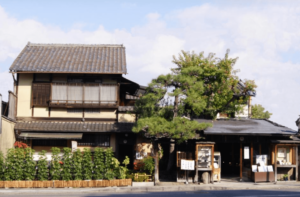
If a foreigner wants to experience making Japanese sweets, what kind of place can he or she go?
Foreigners can experience making Japanese sweets at the following two locations.
Wagashiya
Events at product fairs, etc.
Each has similar experiences but different atmospheres, so it is best to choose the one that best suits your foreign guests.
Japanese-style confectionary store
Wagashi making can be easily experienced at a wagashi shop.
It is advisable to inquire in advance about the experience at a Japanese confectionery, as reservations are often required.
We, Motenas Japan, can also invite a Japanese confectioner for a workshop. The experience at the venue of a seminar or at a special place such as a temple would be a memorable experience in Japan.
Wagashiya is one of the spots where visitors can experience making Japanese sweets.
Events at product pavilions, etc.
Local product centers may hold events for making Japanese sweets.
In this case, you often do not need a reservation, but the drawback is that the event itself is held irregularly, so it is difficult to make a schedule.
However, if the timing is right, it will be an even better memory as you can easily experience making Japanese sweets and also interact with local people.
First, find out if there are any events, and if not, contact the wagashi shop for more information.
Points to keep in mind when experiencing Japanese confectionery

There are a few things to keep in mind when experiencing Japanese confectionery making.
Even though it is an easy experience, it is still something that is carried in the mouth, so it is a good idea to know in advance what to expect and what to look out for.
There are three points to note
… pay attention to sanitation.
Be careful how you store them.
Check for language support.
Attention to hygiene
When experiencing wagashi making, pay attention to hygiene. If you get an upset stomach from the Japanese sweets you have gone to the trouble of making, your memories will be ruined.
In addition to washing and disinfecting hands and fingers, it is also a good idea to wear rubber gloves if you are concerned.
For the experience, the utensils are carefully cleaned, but if water is on them, the wagashi will not last as long, so wipe it off when you notice it.
It is important to pay attention to hygiene when experiencing Japanese confectionery.
Be careful how you store them.
Wagashi preservation methods differ between fresh and dried confections.
Fresh pastries can be kept in plastic or stacked containers at room temperature for up to three days. If kept refrigerated, they will become hard and the texture will change.
Dried sweets can last up to 10 days, making them suitable for souvenirs.
It is recommended to eat Japanese sweets while they are still tasty, paying attention to how they are stored.
Check for language support.
When experiencing Japanese confectionery at a Japanese confectionery store, etc., check in advance whether language services are available.
If the language is not understood, it will be difficult for both the teacher and the students to communicate with each other, and this will cause a lot of trouble.
It would be smooth to contact the classroom and let them know that you are a foreign customer and ask if they can accommodate your language needs.
If you do not have language support, please contact Motenas Japan to arrange for an interpreter or coordinator.
History of Wagashi Making
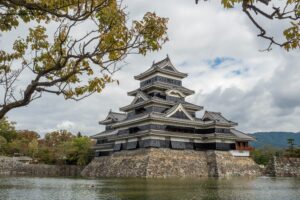
The history of making wagashi dates back to the Jomon period. It is believed that the first wagashi was made by crushing nuts, removing their scum with water, and rounding them into dumplings.
In the Heian period (794-1185), tea culture was introduced from Tang China (today’s China), and at the same time, rice cakes and Japanese sweets made with chestnuts evolved.
In the Edo period (1603-1867), wagashi production flourished even more as warfare subsided and peace prevailed. The domestic production of sugar is also believed to have contributed greatly to the development of wagashi. Tea and wagashi became popular among the general public around this time, and daifukumochi (rice cake with sweet bean paste) and dango (dumplings) were the most commonly sold wagashi in Edo (present-day Tokyo).
It is surprising that most of the wagashi commonly eaten today were made during the Edo period. Later, with the introduction of ovens and other equipment, many baked goods such as sponge cakes were also produced, and wagashi became a part of the food culture that continues to this day.
Types of Wagashi
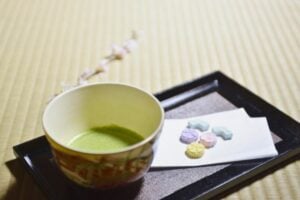
There are several types of Japanese confectionery. Some are familiar to you, while others you may not be familiar with.
In this section, we will cover and explain the different types of wagashi.
boiled and half-dried bonito
Yokan (sweet bean jelly)
Dumplings
kneaded dough
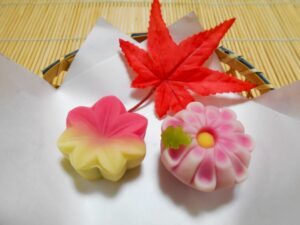
One type of Japanese confectionery that is highly appreciated not only in Japan but also abroad is nerikiri.
Nerikiri (fish paste), in which white bean paste is colored to express seasonal flowers and other flowers, is a typical example of Japanese confectionery that is both beautiful and delicious.
It is made by kneading dough with white bean paste and a binder, then forming it into a shape.
It is recommended to eat it quickly as it does not last long, and foreigners will not be able to make it and bring it back to their own country.
sweet bean jelly
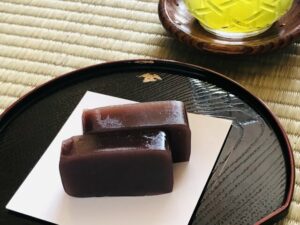
Yokan originally came from China as a soup made from mutton.
Later, it was hardened and eaten with plant materials such as azuki beans and flour so that even Zen monks, who were forbidden to eat meat, could eat it.
Gradually, the scarcity of sugar faded, sweetness was added, and the product evolved in a uniquely Japanese way.
Today, it is a typical Japanese wagashi made by adding sugar and agar to red bean paste.
dumpling (usu. sweet)
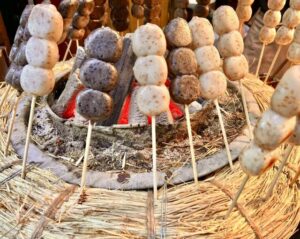
Dumplings are the oldest Japanese confectionery. Dumplings come in a variety of shapes and sizes, some skewered and others filled with red bean paste.
Familiar ones would be dumplings covered with mitarashi or soy sauce-based dumplings.
During the Edo period, dumplings became popular as an easy-to-eat fast food, and it is said that the dumpling changed from an offering to a food for the common people around this time. It was probably less time-consuming for those who made them because all they had to do was mold and boil them.
Dumplings are the origin of wagashi, a type of Japanese confectionery that continues to this day.
Places where you can experience Japanese confectionery
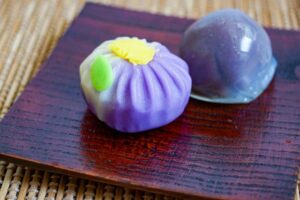
Here are some spots and facilities where you can actually experience making Japanese sweets.
In the Kanto region, there are many facilities where you can experience this in Tokyo and Kamakura.
In Kyoto and Kanazawa, where old townscapes still remain, it is also possible to experience making wagashi at a wagashi shop or product museum.
Kominka.
Ganshundo [Kyoto, Japan
Ishikawa Prefectural Tourism and Products Museum [Kanazawa
KOMINKA.[Kitakamakura
Kominka. is an old private house in Kitakamakura where you can experience matcha green tea and nerikiri (a type of paste).
You can choose from a menu of four different types of wagashi, and you can even try your hand at making your own matcha green tea. You can also make your own matcha (powdered green tea), making this a perfect way to experience Japanese culture.
Each pair is carefully taught by a teacher, so even foreigners who are experiencing it for the first time can feel at ease.
Advance reservations are required, but if there is space available, the experience can be held on the day of the tour. It will be one of your good memories in Japan to experience making your own wagashi while sightseeing in the ancient capital of Kamakura.
Name: komika.
Official website: https://ko-min-ka.com/
Address: 1936, Dai, Kamakura, Kanagawa, 247-0061, Japan
Amagasundo [Kyoto].
Ganshundo, a long-established Japanese confectionery shop established in 1865, offers a Japanese confectionery experience at its East and Sagano branches.
You will have a fulfilling experience with one type of dry confectionery + three types of top quality confectionery + matcha green powdered tea.
The wagashi we make also vary with the season, such as rape blossoms, cherry blossoms, and Japanese bush warblers in spring, and iris, stone bamboo, and morning glories in summer. In summer, you can make dried sweets that represent the season, such as iris, stone bamboo, and morning glory, so you can enjoy the Japanese flavor.
Advance reservations are required, so make a reservation for a time in between sightseeing in Kyoto for the best Japanese confectionery experience.
Name: Ganshundo East Store and Sagano Store
Official website: https://www.kanshundo.co.jp/
Address:Higashiten, 511-1 Chayamachi, Yamatooji-dori, Maejima-go, Higashiyama-ku, Kyoto-shi, Kyoto (In front of Toyokuni Shrine)
Sagano Store 1-1 Saga Shakado Daimon-cho, Ukyo-ku, Kyoto City (in front of Seiryoji Temple – Saga Shakado)
Ishikawa Prefectural Tourism and Products Museum [Ishikawa] (Ishikawa)
You can also experience wagashi at the Ishikawa Sightseeing Products Museum, located near Kenrokuen Garden, a park designated as a cultural asset.
Kanazawa, where the glamorous history of Kaga Hyakumangoku remains strong, still has one of the largest tea ceremony populations in Japan, and the “chanoyu” culture has flourished since ancient times, as has the production of Japanese sweets.
These long-established craftsmen from Kanazawa will explain how to make seasonal japanese sweets and offer hands-on experience.
In addition to making wagashi, there is also gold leaf pasting and making small shimedaiko drums, making it one of the best places to stop by when sightseeing in Kanazawa.
Name: Ishikawa Tourism and Products Museum
Official website: https://kanazawa-kankou.jp/
Address: 2-20, Kenroku-cho, Kanazawa, Ishikawa 920-0936, Japan
Summary
Even though it is a Japanese confectionery experience, there are concerns such as, “Will foreigners enjoy it? There are concerns such as, “Will foreigners enjoy the experience?
It is not difficult to make beautiful wagashi, and the artisans are kind and attentive.
Making wagashi is a traditional culture that can be experienced by men and women of all ages. We would be more than happy if foreigners could enjoy the experience of making wagashi as well.
If there are language problems, interpreters and coordinators can be arranged, so please use Motenas Japan for more than just arranging the experience.
Click here to arrange for an experience, interpreter or coordinator.
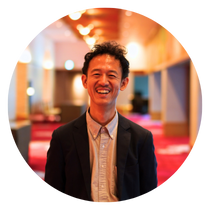
30s male writer. He has worked in a hotel for 16 years and is involved in the travel industry. Through his work at travel agencies and hotels, he developed an interest in travel and often goes on trips. His favorite cities are Sendai and Hakata. He conveys the knowledge he has gained through his travels and the charms of Japan with care.





